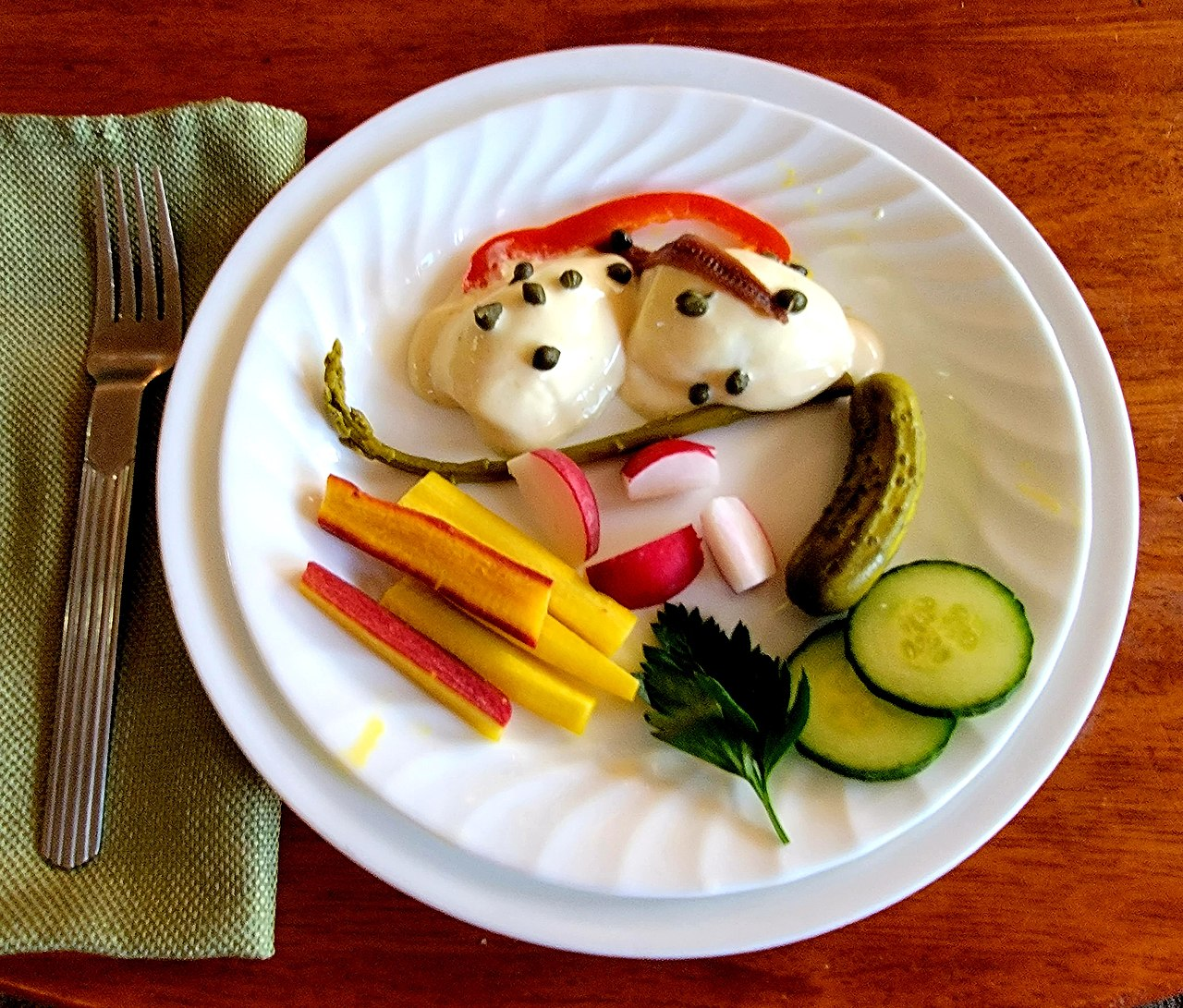I have
a new favorite appetizer, using eggs and mayonnaise. Mayonnaise is a staple in
my pantry. I put it on everything and go through quart jars at an alarming
rate. If you are among those misguided people who don’t like mayonnaise, forget
this column (one of my daughters is in that group).
My new find is eggs mayonnaise—or, since the idea came from France, oeufs mayo. It’s simply a hard-boiled egg coated with mayonnaise. Of course, the New York Times recipe requires you make your own mayo, but I think you can use any good brand. I like Duke’s. And everyone has their own boiling method, but this is what I do: cover eggs with cold water, an inch above the top, and add a splash of vinegar. Bring to a boil, reduce to strong simmer and time for an exact eight minutes, and then drain, run cold water on them, and dump about two cups of ice on them. Let them sit until cool enough to go in the fridge. And always peel under cold running water—I was astounded to find one of my sons didn’t know that. He was hunched over the kitchen counter, picking the shell off tiny bits at a time.
A
recipe for oeufs mayo was first published in a French cookbook in the thirties
and made its way to the States by the sixties, though I have never seen this
dish on a menu. In the late twentieth century, when cholesterol concerns were
high, the eggs began to go out of fashion in Parisian bistros, so a French chef
formed the Association de sauvegarde de l’oeuf mayonnaise. Today the society to
preserve eggs mayo is still active. The current president, grandson of the
founder, claims that although the dish looks simple, it is quite complex and
the timing of cooking the eggs is crucial. The white should be firm, but the
yolk retain just a bit of creaminess.
Slice
the egg in half lengthwise, salt and pepper cut side to taste, turn it over on
serving plate and coat with mayo. You want the mayo to be thin enough to coat
but not so thin it will run off and puddle. You can thin with a tiny bit of
water (unimaginative), milk (okay, but …) or buttermilk or lemon (my
recommendations). Add at almost a drop at a time to get the right consistency. Serve
on a bed of lettuce and garnish with minced herbs or paprika if so inclined or
serve with crudities.
And
then there are scrambled eggs, one of my go-to dinners when I am eating alone.
My new find is mayoneggs. Beat two large eggs with a tablespoon of mayo and
salt and pepper to taste until well combined and no white streaks show. Melt
two teaspoons butter in a medium non-stick skillet over medium heat, add eggs,
and stir gently until creamy and fluffy. I love soft-scrambled eggs, which
these should be, but my family all cook eggs until they are hard little bits of
concrete. So they yell at me to come get my eggs out of the skillet while theirs
continue to cook. I did once try to scramble eggs with cream cheese and would
not advise that, but a bit of diced smoked salmon is always good.
And as
long as I’m on the subject of eggs and mayonnaise, I might as well throw in egg
salad, one of my favorite lunches. Once a friend was coming for a light supper
on the front porch (when I had a porch) and I fixed what I thought was a real
treat—egg salad sandwiches with a slice of smoked salmon. She blanched when she
saw it. Turns out she eats mayo but hates eggs. For those of you who like egg
salad, here’s my favorite recipe—the easiest I’ve ever found and so good. This
makes four sandwiches or servings, so I often halve it.
Egg salad
6 eggs, hard boiled
3-4 Tbsp. mayonnaise
1 tsp. Dijon mustard
2 Tbsp. dill pickle relish
Salt and pepper to taste.
Mix
everything together and chill before serving.





